Themed collection Editor’s Choice: Microfluidics

Journal of Materials Chemistry B and Biomaterials Science Editor's choice web collection: “Recent advances in microfluidics”
Guoping Chen introduces a Journal of Materials Chemistry B and Biomaterials Science Editor's choice web collection on recent advances in microfluidics.

J. Mater. Chem. B, 2021,9, 3606-3607
https://doi.org/10.1039/D1TB90057A
Microphysiological systems for the modeling of wound healing and evaluation of pro-healing therapies
Wound healing microphysiological systems have been engineered with synthetic and natural materials and techniques such as bioprinting or viscous finger patterning. Model designs focus on particular phases of wound healing or the recapitulation of micro-anatomies.

J. Mater. Chem. B, 2020,8, 7062-7075
https://doi.org/10.1039/D0TB00544D
From cells-on-a-chip to organs-on-a-chip: scaffolding materials for 3D cell culture in microfluidics
Integrating ECM materials in microfluidics for 3D cell culture.
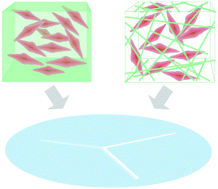
J. Mater. Chem. B, 2020,8, 6667-6685
https://doi.org/10.1039/D0TB00718H
Aptamer-based nanostructured interfaces for the detection and release of circulating tumor cells
This paper summarizes various aptamer-functionalized nanostructured interfaces for the detection and release of circulating tumor cells.
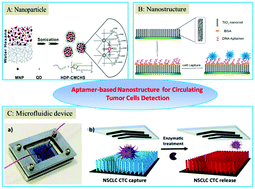
J. Mater. Chem. B, 2020,8, 3408-3422
https://doi.org/10.1039/C9TB02457C
Advances in functional nucleic acid based paper sensors
This article provides an extensive review of paper-based sensors that utilize functional nucleic acids, particularly DNA aptamers and DNAzymes, as recognition elements.
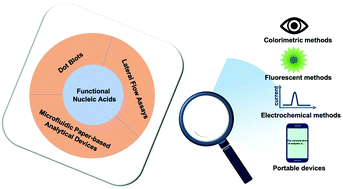
J. Mater. Chem. B, 2020,8, 3213-3230
https://doi.org/10.1039/C9TB02584G
Biosensors and bioassays for determination of matrix metalloproteinases: state of the art and recent advances
This review highlights the recent advances in nanomaterial-based immunoassays for MMP abundance measurements and nanomaterial-based biosensors for MMP activity determination.
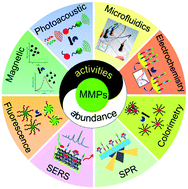
J. Mater. Chem. B, 2020,8, 3261-3291
https://doi.org/10.1039/C9TB02189B
Microfluidics for ZnO micro-/nanomaterials development: rational design, controllable synthesis, and on-chip bioapplications
This review provides a comprehensive summary of recent advances in microfluidics-enabled controllable synthesis and bioapplications of ZnO micro-/nanomaterials.
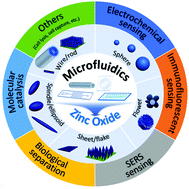
Biomater. Sci., 2020,8, 1783-1801
https://doi.org/10.1039/C9BM01787A
All-in-one microfluidic assembly of insulin-loaded pH-responsive nano-in-microparticles for oral insulin delivery
Here, a continuous two-step glass-capillary microfluidic technique to produce a multistage oral insulin delivery system is reported. This system represents a promising alternative for the common protein/peptide-loaded liposome formulations.

Biomater. Sci., 2020,8, 3270-3277
https://doi.org/10.1039/D0BM00743A
Multiphasic microgel-in-gel materials to recapitulate cellular mesoenvironments in vitro
Cell-instructive biohybrid microgel-in-gel materials can guide the faithful in vitro reconstitution of tissues.
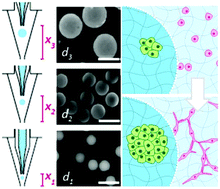
Biomater. Sci., 2020,8, 101-108
https://doi.org/10.1039/C9BM01009B
Combined effect of shear stress and laser-patterned topography on Schwann cell outgrowth: synergistic or antagonistic?
Shear stress can act either synergistically or antagonistically with topographical cues in specific cell responses such as orientation and elongation.

Biomater. Sci., 2021,9, 1334-1344
https://doi.org/10.1039/D0BM01218A
Continuous flow fabrication of Fmoc-cysteine based nanobowl infused core–shell like microstructures for pH switchable on-demand anti-cancer drug delivery
pH responsive core–shell nanobowl-microstructures (NB-shells) as novel and exciting platforms for stimuli activated drug delivery applications.
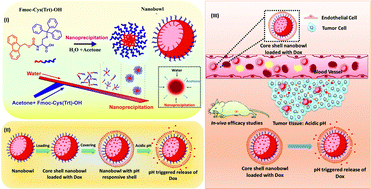
Biomater. Sci., 2021,9, 942-959
https://doi.org/10.1039/D0BM01386B
PLGA/chitosan–heparin composite microparticles prepared with microfluidics for the construction of hMSC aggregates
P/C–h composite microparticles fabricated by microfluidics enhanced the biological functions of hMSC aggregates through neutralizing PLGA′ acidic degradation products.
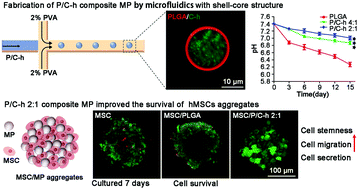
J. Mater. Chem. B, 2020,8, 9921-9932
https://doi.org/10.1039/D0TB01593H
Exploring microfluidics as a tool to evaluate the biological properties of a titanium alloy under dynamic conditions
When evaluating the biological properties of titanium under dynamic conditions, cell proliferation was shown to be dominant over cell differentiation.

Biomater. Sci., 2020,8, 6309-6321
https://doi.org/10.1039/D0BM00964D
One-step synthesis of composite hydrogel capsules to support liver organoid generation from hiPSCs
One-step synthesis of composite hydrogel capsules (CHCs) that allow engineering hiPSC-derived liver organoids in an oil-free droplet microfluidic system.
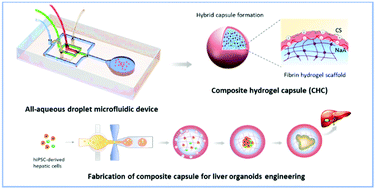
Biomater. Sci., 2020,8, 5476-5488
https://doi.org/10.1039/D0BM01085E
Colorimetric detection of urine glucose using a C/CdTe QDs–GOx aerogel based on a microfluidic assay sensor
A sensitive fluorescent microfluidic sensor based on carbon quantum dots (CQDs), cadmium telluride quantum dots (CdTe QDs) aerogel and glucose oxidase (GOx) for urinal glucose detection was fabricated via a simple method.

J. Mater. Chem. B, 2020,8, 7160-7165
https://doi.org/10.1039/D0TB00328J
A microfluidics-derived growth factor gradient in a scaffold regulates stem cell activities for tendon-to-bone interface healing
Treatment of tendon-to-bone interface injury has long been challenging in sports medicine.
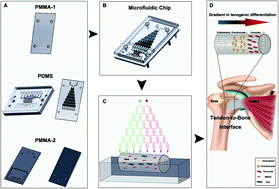
Biomater. Sci., 2020,8, 3649-3663
https://doi.org/10.1039/D0BM00229A
Tumor localization of oncolytic adenovirus assisted by pH-degradable microgels with JQ1-mediated boosting replication and PD-L1 suppression for enhanced cancer therapy
Illustration of pH-degradable microgels (MGs) for the simultaneous encapsulation of OA and JQ1 for an enhanced oncolytic viral treatment with JQ1-meidated boosting viral replication and PD-L1 suppression.
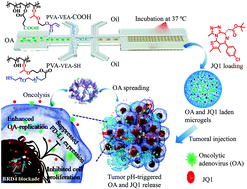
Biomater. Sci., 2020,8, 2472-2480
https://doi.org/10.1039/D0BM00172D
Boosting biomolecular interactions through DNA origami nano-tailored biosensing interfaces
Nano-tailored DNA origami designs nanostructure the bioreceptor layer of encoded microparticles in an innovative microfluidic platform, hereby boosting biomolecular interactions.
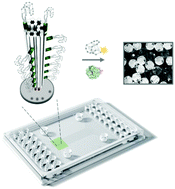
J. Mater. Chem. B, 2020,8, 3606-3615
https://doi.org/10.1039/C9TB02439E
Modulating the properties of flow-assembled chitosan membranes in microfluidics with glutaraldehyde crosslinking
Glutaraldehyde crosslinking significantly enhances the mechanical robustness of the originally compromised flow-assembled chitosan membranes after Pluronic passivation in microfluidics.

J. Mater. Chem. B, 2020,8, 2519-2529
https://doi.org/10.1039/C9TB02527H
Microencapsulation improves chondrogenesis in vitro and cartilaginous matrix stability in vivo compared to bulk encapsulation
The encapsulation of cells into microgels is attractive for applications in tissue regeneration.

Biomater. Sci., 2020,8, 1711-1725
https://doi.org/10.1039/C9BM01524H
Characterization and application of fluidic properties of trinucleotide repeat sequences by wax-on-plastic microfluidics
This work demonstrates sequence directed flexibility of neurodegenerative trinucleotide repeat sequences can be translated into distinct capillary flow using wax-on-plastic microfluidics and used to detect microsatellite repeat expansions diseases.
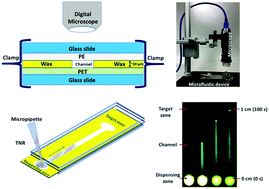
J. Mater. Chem. B, 2020,8, 743-751
https://doi.org/10.1039/C9TB02208B